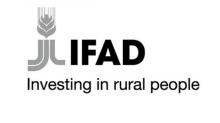Resource information
This report argues that land reform, both tenancy reform and redistribution of ceiling surplus lands to the landless, is important to poverty alleviation.The paper argues that in addition to production benefits, land reform helps to change the local political structure by giving more voice to the poor. Re-distributive land reform, whether through market-assisted land reform programmes or otherwise, should remain a substantive policy issue for poverty reduction. The report also points out that there have been no technological breakthroughs for crops such as sorghum, millet, and cassava, the staple crops grown on marginal lands by poor people and mostly consumed by them.The paper discusses the case of China, where a rural development strategy focusing on the non-farm sector brought about a significant change in the structure of the economy. In addition to boosting the rural economy, this strategy increased farmers’ incomes and contributed to poverty reduction. The report also deals with the experiences of India in another non-farm arena, rural public works as an employment generation scheme for the rural poor. The report discusses some examples from IFAD’s experience to demonstrate the potential of local governance and decentralisation in rural poverty reduction.Recommendations:more vigorous research in technologies that revive the productivity growth of staples in the marginal uplands and drylandsthe poor in these less favoured areas need to be better informed in their judgements of the new technical change in seeds, fertilizers and land-water management aspects, through more regular open interaction with pro-poor scientists in the relevant topic areas. Such interaction should be in an open science environment subject to public, democratic controlas and when appropriate, there should be alternative and sustainable approaches based on a possible blending of indigenous farmers’ knowledge and modern practices. Well-informed public debate would also verify the claims of biotechnology to address the specific problems of poor farmers and marginal areasthe potential of sustainable or regenerative agriculture, as a unique way to boost returns from complex and diverse agricultural systems, is also to be exploreddecentralising resources to the poor and develop them as common properties of the poor, increasing the incomes of the poorcoalitions of the poor to ensure that the transfers accrue to them



